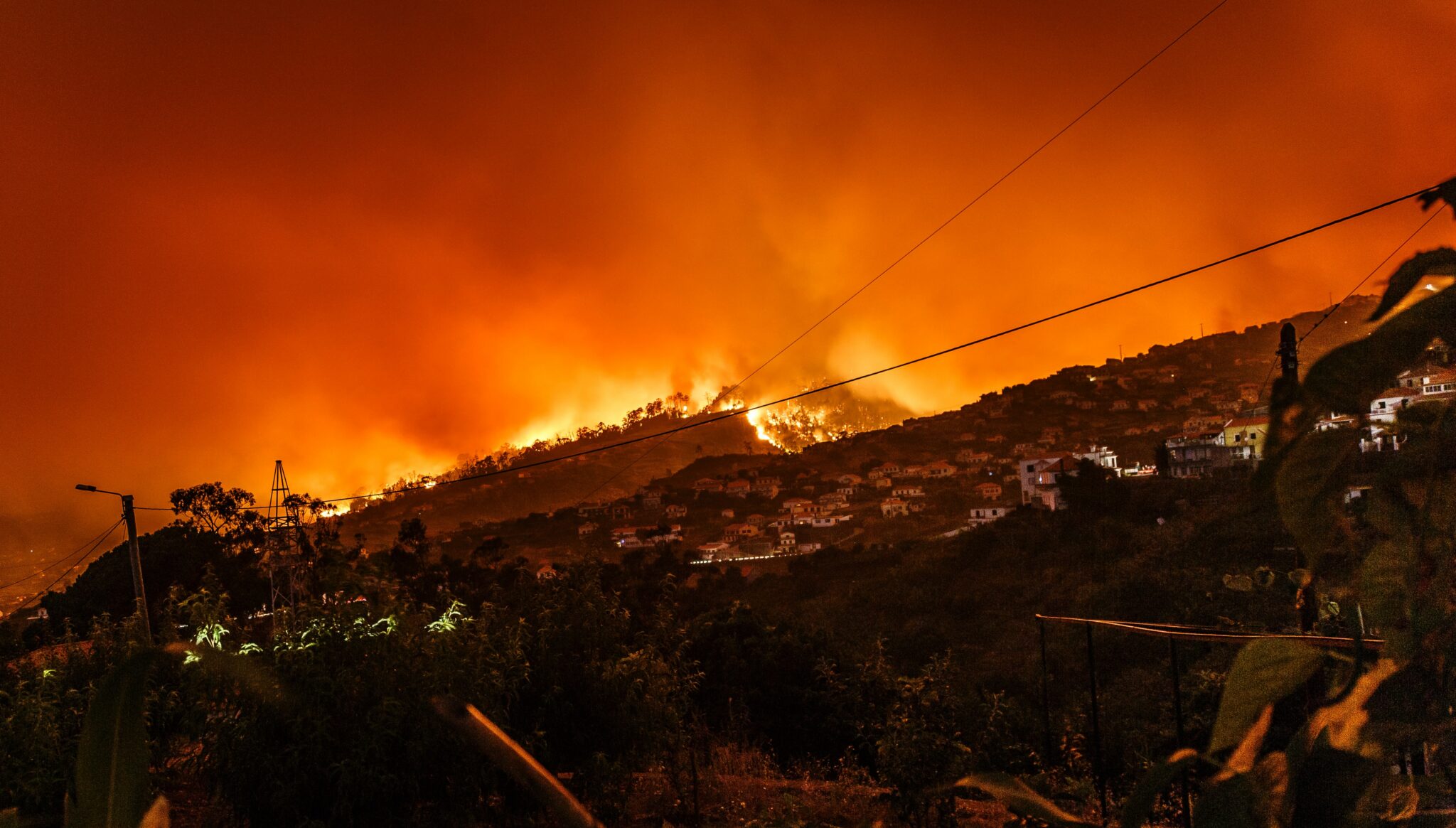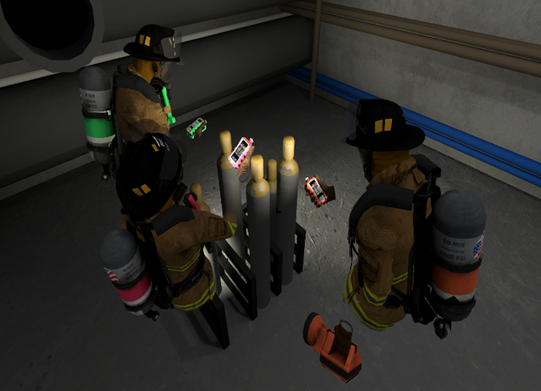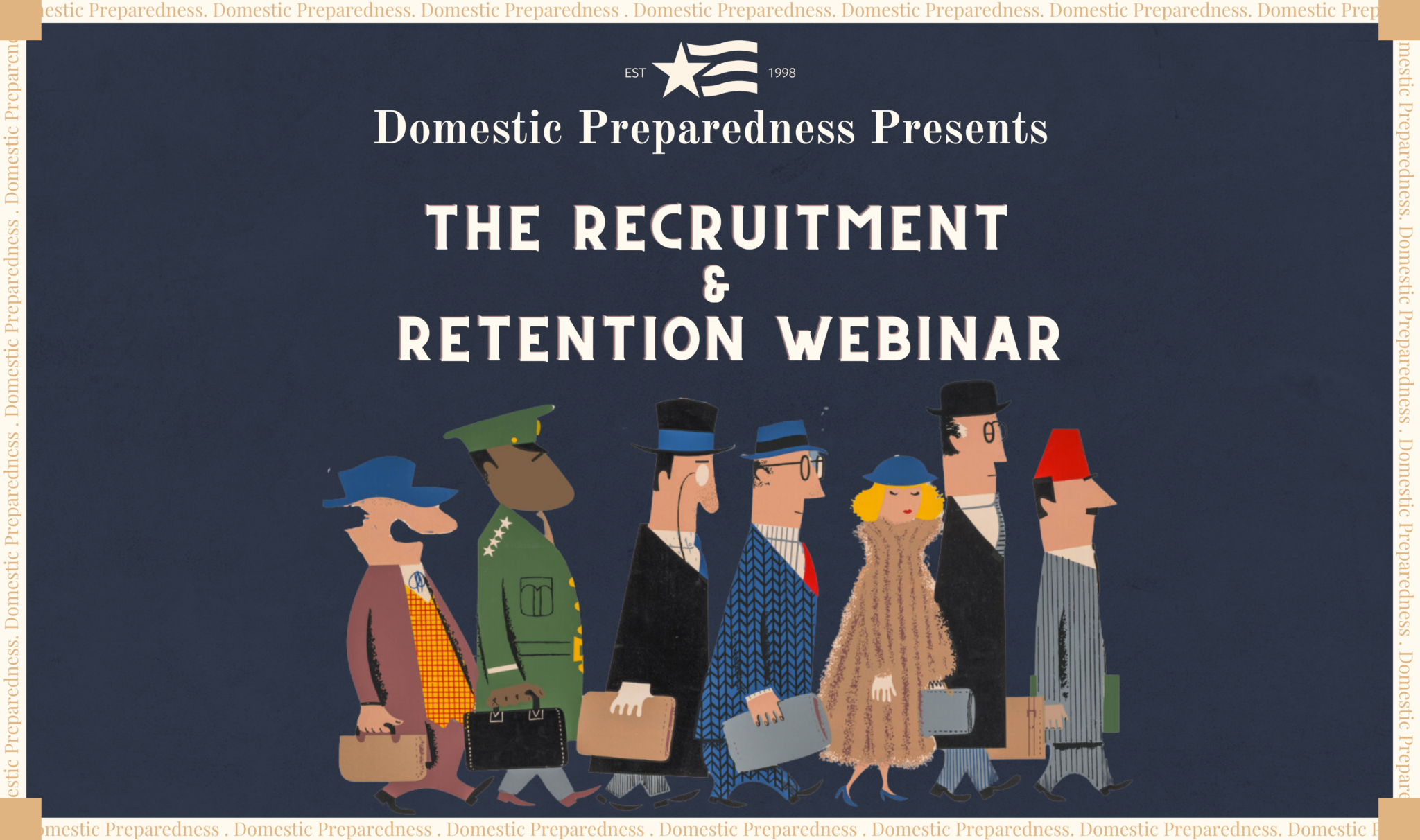Most recently published

Responding to the Call – The Cost of Caring for Others
Mary Schoenfeldt
September 13, 2023
There is a cost to caring for others, but it does not need to be a lifelong debt that continues to overwhelm the people who stepped up and those around them. The cost can be manageable with the right plan of support and the willingness to explore coping options.

Three Puzzle Pieces That Increase Community Preparedness
Paul Gunnels
September 13, 2023
This author reflects on his team’s direct mission to New York in response to the September 11, 2001, terrorist attacks, commonly referred to as 9/11, to consider if communities are more prepared today than they were in 2001.

Citizen Soldiers and American State Defense Forces
James P. Howard Ⅱ
September 6, 2023
State defense forces can be activated in times of emergency to assist with disaster response, homeland security, and other missions. However, more awareness within communities nationwide is needed to support the efforts of these assets.

Bioterrorism – Could Smallpox Return?
Robert C. Hutchinson
September 6, 2023
Although smallpox was eradicated from its human population and reservoir, it is still in designated stockpiles controlled by two nations and possibly in other unknown locations. Learn about the possible threat and the need for greater preparedness and discussion.

Close to Home
Catherine L. Feinman
August 30, 2023
This August 2023 issue of the Domestic Preparedness Journal focuses on several ways disasters can suddenly hit close to home and suggestions for mitigating potentially devastating consequences.

Targeted Violence in Schools: Are Future Educators Prepared?
Danielle Arias, Jesse Spearo and Kelley L. Davis
August 23, 2023
Targeted-violent events threaten staff and students’ physical, psychological, and emotional well-being in public schools. However, the increasing frequency of these incidents raises concerns about the preparedness of incoming teachers and current staff to handle such incidents.

Fireproofing the Future: Safeguarding Against Wildfires
Roy Thun
August 23, 2023
July 2023 was the world’s hottest recorded month in history. Increasing heat events increase the risk of wildfires. However, good land and waste management practices can significantly prevent and mitigate the risk and consequences of these events.

Deploying With Adult Non-Prescription Medication Kits
Richard (Kirk) Higgins
August 16, 2023
The availability of non-prescription medications may mean the difference between a successful deployment and needing to return home ahead of schedule. As such, first responders should consider non-prescription medication kits as part of their pre-deployment planning.

Training for Hazardous Tasks in Virtual Environments
Ryan Putman
August 16, 2023
Being able to recreate complex hazardous materials incidents in a classroom setting teaches life-saving lessons in a safe environment. Advances in virtual and augmented reality training systems provide instructors with new tools to train the next generation of first responders.

Community Preparedness for the Socially & Civically Isolated
George Schwartz
August 9, 2023
Even before the COVID-19 pandemic, about half of American adults reported feeling lonely. A lack of engagement can have serious health effects for socially isolated individuals and implications for the work of emergency management professionals.

Recruitment and Retention Panel Discussion
Aaron Alvarez, Nathan DiPillo, Anthony S. Mangeri, Elizabeth Saunders and Michael Valiente
August 9, 2023
On August 3, 2023, Domestic Preparedness hosted a panel of five emergency management professionals who discussed today’s recruitment and retention challenges.

Sports Celebrations – Expect the Best, Plan for the Worst
Robert Leverone
August 2, 2023
Large sports-related celebratory events necessitate a coordinated response from municipal government agencies and the community. Thorough planning, intelligence-based risk assessments, and stakeholder input are critical components of a comprehensive plan.

Beyond Registries: Better Solutions for People With Disabilities
June Isaacson Kailes
September 20, 2023
Emergency planners often identify volunteer disaster registries as a solution for assisting people with disabilities during a disaster. However, registries have flaws. Learn about eight common registry problems and the author’s better solutions that should be considered.

Responding to the Call – The Cost of Caring for Others
Mary Schoenfeldt
September 13, 2023
There is a cost to caring for others, but it does not need to be a lifelong debt that continues to overwhelm the people who stepped up and those around them. The cost can be manageable with the right plan of support and the willingness to explore coping options.

Three Puzzle Pieces That Increase Community Preparedness
Paul Gunnels
September 13, 2023
This author reflects on his team’s direct mission to New York in response to the September 11, 2001, terrorist attacks, commonly referred to as 9/11, to consider if communities are more prepared today than they were in 2001.

Citizen Soldiers and American State Defense Forces
James P. Howard Ⅱ
September 6, 2023
State defense forces can be activated in times of emergency to assist with disaster response, homeland security, and other missions. However, more awareness within communities nationwide is needed to support the efforts of these assets.

Bioterrorism – Could Smallpox Return?
Robert C. Hutchinson
September 6, 2023
Although smallpox was eradicated from its human population and reservoir, it is still in designated stockpiles controlled by two nations and possibly in other unknown locations. Learn about the possible threat and the need for greater preparedness and discussion.

Close to Home
Catherine L. Feinman
August 30, 2023
This August 2023 issue of the Domestic Preparedness Journal focuses on several ways disasters can suddenly hit close to home and suggestions for mitigating potentially devastating consequences.

Targeted Violence in Schools: Are Future Educators Prepared?
Danielle Arias, Jesse Spearo and Kelley L. Davis
August 23, 2023
Targeted-violent events threaten staff and students’ physical, psychological, and emotional well-being in public schools. However, the increasing frequency of these incidents raises concerns about the preparedness of incoming teachers and current staff to handle such incidents.

Fireproofing the Future: Safeguarding Against Wildfires
Roy Thun
August 23, 2023
July 2023 was the world’s hottest recorded month in history. Increasing heat events increase the risk of wildfires. However, good land and waste management practices can significantly prevent and mitigate the risk and consequences of these events.

Deploying With Adult Non-Prescription Medication Kits
Richard (Kirk) Higgins
August 16, 2023
The availability of non-prescription medications may mean the difference between a successful deployment and needing to return home ahead of schedule. As such, first responders should consider non-prescription medication kits as part of their pre-deployment planning.

Training for Hazardous Tasks in Virtual Environments
Ryan Putman
August 16, 2023
Being able to recreate complex hazardous materials incidents in a classroom setting teaches life-saving lessons in a safe environment. Advances in virtual and augmented reality training systems provide instructors with new tools to train the next generation of first responders.

Community Preparedness for the Socially & Civically Isolated
George Schwartz
August 9, 2023
Even before the COVID-19 pandemic, about half of American adults reported feeling lonely. A lack of engagement can have serious health effects for socially isolated individuals and implications for the work of emergency management professionals.

Recruitment and Retention Panel Discussion
Aaron Alvarez, Nathan DiPillo, Anthony S. Mangeri, Elizabeth Saunders and Michael Valiente
August 9, 2023
On August 3, 2023, Domestic Preparedness hosted a panel of five emergency management professionals who discussed today’s recruitment and retention challenges.
AI Partners – Filling Law Enforcement Experience Gaps
Jeff Henderson
July 26, 2023
As the hiring gap in law enforcement widens, agencies must find innovative solutions to maintain the experience and wisdom of their seasoned officers. Artificial intelligence is one solution being explored to transfer this critical knowledge.
Three Keys to Life-Saving Hurricane Season Communication
Brian Toolan
July 26, 2023
Years of strategy and planning go into crisis response and developing a communication plan that keeps people safe, clearly outlines the situation, and empowers them to act. Learn about the three key factors to a successful communications plan during hurricane season.
Maintaining Planning Strategies for Evolving Threats
Catherine L. Feinman
July 25, 2023
Research and evaluation help emergency preparedness professionals stay current on emerging threats, new technologies, and resource and training gaps. The authors in this July edition of the Domestic Preparedness Journal share important research and lessons learned to assist in the planning process for any organization.
Long-Term Care Facilities in Emergency Preparedness Planning
Tanya M. Scherr and Dan Scherr
July 19, 2023
An important part of community emergency preparedness planning includes long-term care facilities such as nursing homes, dialysis, home care centers, or hospice facilities. Plans must in place for these facilities to care for the residents in their care during emergencies.
Incident Management – The Whataburger Way
Ron Derrick
July 19, 2023
The Whataburger Command Center team uses a hybrid form of the Incident Command System when an unexpected event threatens the company’s stability, reputation, or operations. The main goal is to minimize damages and ensure the company’s survival and quick recovery.
Inside the “Boot Camp” for Emergency Managers
Michael Valiente
July 12, 2023
The first cohort of the Texas Emergency Management Academy has graduated. Learn about the components of this unique and comprehensive 8-month program from the perspective of one of the graduating cadets.
Family Terror Networks 2.0: January 6, Part 2
Dean C. Alexander and Huseyin Cinoglu
July 12, 2023
Research shows family-affiliated extremism contributed to more than one-sixth of all January 6 defendants. Homeland security and law enforcement agencies must understand family-affiliated extremism and the efforts needed to combat it. Part 2 of 2.
Family Terror Networks 2.0: January 6, Part 1
Dean C. Alexander and Huseyin Cinoglu
July 5, 2023
Research shows family-affiliated extremism contributed to more than one-sixth of all January 6 defendants. Homeland security and law enforcement agencies must understand family-affiliated extremism and the efforts needed to combat it. Part 1 of 2.
Creating a New Standard for Evaluating Tabletop Exercises
John Duda and Scott J. Glick
July 5, 2023
Tabletop exercises are vital in preparing organizations to respond to critical incidents. However, an industry standard has not emerged on how to evaluate their effectiveness. A new standard that implements quantitative and qualitative assessment tools is needed.
Getting Ready for the Next Emergency
Catherine L. Feinman
June 27, 2023
During an emergency, it is common for communities – comprising private citizens to large agencies – to come to the aid of others. It is imperative to be prepared now because emergencies will not wait for us to get ready.
Are Public Health Agencies Ready, or Just Prepared?
Raphael M. Barishansky
June 21, 2023
Is it time to retire the term public health preparedness and replace it with public health readiness? When building emergency planning efforts and response capabilities, jurisdictions and local health entities must reconfigure existing plans with the readiness factor in mind.
Unleashing the Power of Amateur Radio in Times of Emergency
Scott Roberts and Desiree Baccus
June 21, 2023
Amateur radio operators are skilled communicators who serve as a lifeline during emergencies by relaying essential information, coordinating resources, and providing situational updates. On June 24-25, 2023, they will participate in the annual nationwide AARL Field Day event.
Follow Us
Get Instant Access
Subscribe today to Domestic Preparedness and get real-world insights for safer communities.


